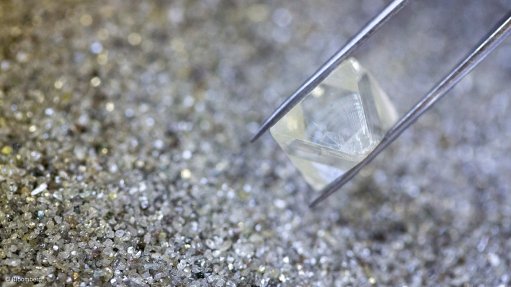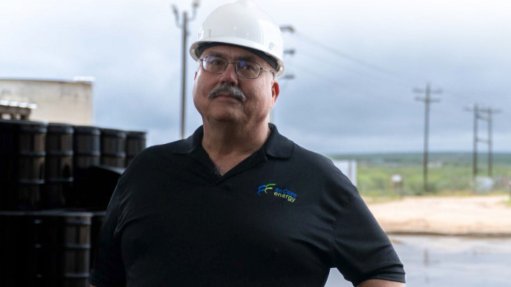Embattled Mintails denies it has no rehab funds, plans for its operations



WHOSE RESPONSIBILITY? If Mintails ceases operations will the responsibility and environmental liability be transferred to neighbouring mines, the local municipality and the State?
Photo by Duane Daws
EDDIE MILNE Mintails has never entered into any agreements with the Department of Water and Sanitation or the Trans-Caledon Tunnel Authority in relation to treating any AMD water on their behalf
South Africa-focused tailings extractor Mintails has refuted claims that it has no rehabilitation funds or a rehabilitation plan for its mining operations, which are located west of Johannesburg.
These allegations were made by nonprofit organisation the Federation for a Sustainable Environment’s (FSE’s) CEO, Mariette Liefferink, following reports that Mintails was facing financial challenges and the threat of having its electricity cut off by State-owned power utility Eskom for allegedly owing the utility R9-million in unpaid electricity bills.
In an email on October 13 to relevant government departments and State-run entities, Liefferink enquired what would happen if Mintails stopped operations, and whether the responsibility and environmental liability would be transferred to neighbouring mines, the local municipality and the State. The recipients included the Department of Water and Sanitation (DWS), the Department of Mineral Resources (DMR) and the Trans-Caledon Tunnel Authority (TCTA).
TCTA business analyst Richard Holden responded to Liefferink on October 14: “The surrounding communities have already raised issues around the safety of openpits (and rioted over this, according to Mintails’ annual report) and, from Mintails’ reports, it is clear that there is connectivity from the pits into the mining void, thus increasing the potential for increased ingress of rainfall and thus increasing the volumes of acid mine drainage (AMD). These are issues that the DMR would need to address.”
Holden added that the DWS and the TCTA were already aware that they might have to potentially “step in” to maintain the treatment process in the Western basin should Mintails cease to operate.
Mintails CFO Eddie Milne points out to Mining Weekly that the AMD challenge in the Wits West basin has been ongoing since 2002, when it started decanting, as a result of the legacy of over 120 years of mining in the area.
“We did not create this legacy, as Mintails only came into being in 2006. In fact, we have been using AMD water in our processing operations. Through this, we have developed tailings water treatment (TWT) technology to treat AMD to a similar standard and quality as that of what high-density sludge farms are able to achieve,” he states.
Milne says that Mintails has never entered into any agreements with the DWS or the TCTA with regard to treating any AMD water on their behalf.
“The DWS and the TCTA’s AMD treatment programme and the long-term project of [installing] pumps in the Western basin, which is happening on Mintails site, [are] not affected by any contractual obligations from the Mintails perspective,” he states.
Regarding the financial pressures that the company is facing, Milne says: “For us, it is business as usual and, as with many other companies in the current economic environment, we are facing quite a number of business challenges, but we are hopeful that we can successfully make it through this challenging period.”
Liefferink notes that Eskom is rerouting “electrical lines” at Mintails’ slimes dump, which is located on the company’s site at the corner of the R28 and the Krugersdorp highway. She is of the view that Mintails would have to pay for this work.
Milne says Eskom has a servitude on Mintails’ site for the placement of its pylons. “We have approached Eskom and identified the relevant issues about the pylons and its servitudes and the fact that [they are] located on a movable asset. It is for this reason Eskom has to undertake the relocation of the pylons,” he explains.
Milne tells Mining Weekly that Mintails has agreed to provide Eskom with a new servitude in an area where it has mined out a large portion of the dump, which will enable the power utility to place its pylons in a mined-out area that will have already been rehabilitated.
“Until this process has been completed, Eskom cannot place its pylons in the new area. This will be undertaken at Eskom’s expense and is not the responsibility of Mintails,” he asserts.
However, Milne notes that there are other areas on Mintails’ site where there are pylons over the Wits West pit and the rerouting of these will be undertaken at Mintails’ expense.
Environment Focus
Additionally, he points out that the Eskom dump is located at the head waters of the Wonderfonteinspruit, which feeds into the Mooi river and ultimately into the Vaal and Orange rivers.
“The critical issue is that all the contaminant sources at the headwaters need to be removed as this will provide multiple benefits for any downstream water users. If Mintails is able to remove all the tailings located near the headwaters, this will also assist in decontaminating and rehabilitating the Lancaster dam,” states Milne.
He explains that the rehabilitation of the dam and its surrounding areas cannot take place until Eskom has moved its pylons, and the Eskom dump and the 1L10 tailings dump (which is located near to the Eskom dump) .
Milne says that, once this has been completed, there will be an improved environment at the headwater of the Wonderfonteinspruit.
“We have been trying to convey the importance of this work to Liefferink on an ongoing basis. One does not address 120 years of mining legacy in two or three years– it takes time, planning and a large financial input.
“We are therefore working together with the DWS to provide them with alternative solutions in tackling the challenge of AMD. In applying our TWT process to the treatment of AMD and with the Rand Uranium treatment plant, we can make a definitive impact on the water in the Western basin void and reduce the water levels to meet the environmental critical level,” he concludes.
Comments
Press Office
Announcements
What's On
Subscribe to improve your user experience...
Option 1 (equivalent of R125 a month):
Receive a weekly copy of Creamer Media's Engineering News & Mining Weekly magazine
(print copy for those in South Africa and e-magazine for those outside of South Africa)
Receive daily email newsletters
Access to full search results
Access archive of magazine back copies
Access to Projects in Progress
Access to ONE Research Report of your choice in PDF format
Option 2 (equivalent of R375 a month):
All benefits from Option 1
PLUS
Access to Creamer Media's Research Channel Africa for ALL Research Reports, in PDF format, on various industrial and mining sectors
including Electricity; Water; Energy Transition; Hydrogen; Roads, Rail and Ports; Coal; Gold; Platinum; Battery Metals; etc.
Already a subscriber?
Forgotten your password?
Receive weekly copy of Creamer Media's Engineering News & Mining Weekly magazine (print copy for those in South Africa and e-magazine for those outside of South Africa)
➕
Recieve daily email newsletters
➕
Access to full search results
➕
Access archive of magazine back copies
➕
Access to Projects in Progress
➕
Access to ONE Research Report of your choice in PDF format
RESEARCH CHANNEL AFRICA
R4500 (equivalent of R375 a month)
SUBSCRIBEAll benefits from Option 1
➕
Access to Creamer Media's Research Channel Africa for ALL Research Reports on various industrial and mining sectors, in PDF format, including on:
Electricity
➕
Water
➕
Energy Transition
➕
Hydrogen
➕
Roads, Rail and Ports
➕
Coal
➕
Gold
➕
Platinum
➕
Battery Metals
➕
etc.
Receive all benefits from Option 1 or Option 2 delivered to numerous people at your company
➕
Multiple User names and Passwords for simultaneous log-ins
➕
Intranet integration access to all in your organisation



















